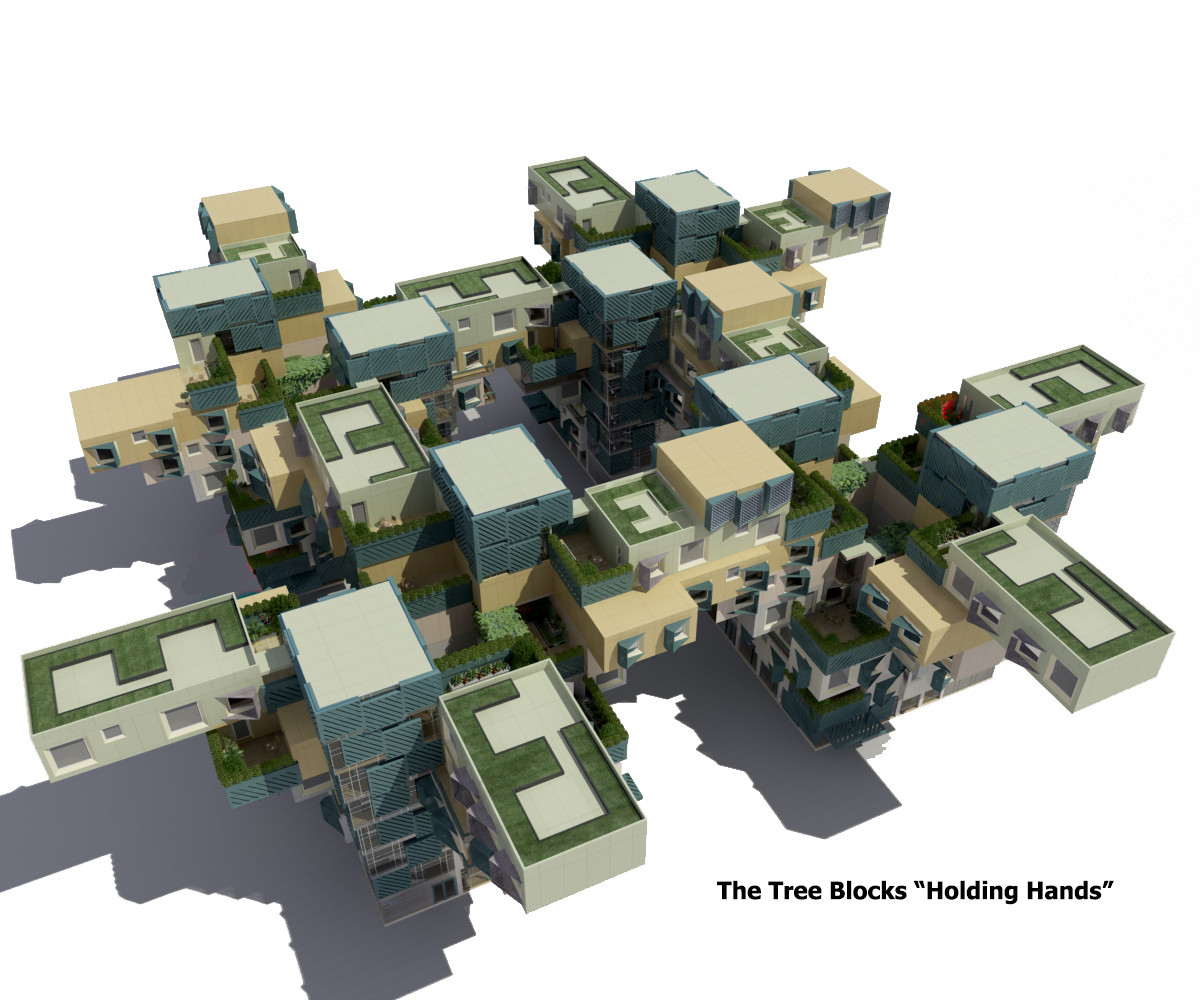
A universal problem facing cities worldwide today is mass social housing. This issue manifests differently in different places: in some cases, housing built on modernist principles has proven unsustainable and socially problematic; in others, the challenge is to replace informal construction with safe, universal housing schemes -- without repeating the mistakes of modernism.
To address these issues, UN Habitat launched a student competition in September to provide designs for local, specific social housing solutions for cities around the globe. We've collected the winners in the overall competition, as well as some of our favorites from the 6 regional and 38 national winners, after the break.
Team Improvistos - Valencia, Spain (1st Overall)


Choosing a housing block on the southern outskirts of Valencia with a low occupancy and high unemployment rate, Improvistos propose a solution which involves skills training, primarily in the timber industry, which is the primary local employer. The housing blocks themselves would be subject to temporary, reversible interventions, bringing empty or under-used apartments into use by reconfiguring the internal layout and utilizing the space as communal and office space. Externally, temporary wooden additions reconfigure circulation and add community functions such as rooftop greenhouses.
The scheme also includes plans to reintroduce local natural features and reclaim public space by providing parking at the edges of the neighborhood.
Casablanca, Morocco (2nd Overall)


This collaboration between students from Sweden and Morocco focuses on the former slum area of Sidi Moumen, an area which, although undergoing gradual revitalization by the government, is still beset by problems. The team focuses on what the community says is still lacking, proposing waste collection and recycling centers to deal with the area's waste problem and providing work to the high proportion of unemployed youth. In reaction to residents' complaints that there are no green spaces for recreation or for community bonding, they also propose small communal urban farms and a scheme to reduce car usage.
Team Chico Mendes - Florianópolis, Brazil (1st, Latin America & the Caribbean)


Another project set in a former slum, this proposal from Brazil primarily set out to undo the damage caused by the formalization of housing in the area. The scheme by the government has resulted in a fragmented community, with sheds intended for income generation barely being used, save for one used as a recycling center with very poor working conditions. The proposal is to move the recycling center and remove the other sheds, allowing through-routes to better connect the community. It also provides new spaces for informal work which overlook communal space - allowing parents to watch over their playing children while they work.
Team Render - Homs, Syria (1st, Syria)


In Homs, housing is a desperate need; the area in question is now 90% destroyed. The government's plans for rebuilding risk repeating the errors of previous housing schemes. Team Render has adapted motifs from traditional housing that provide shade and ventilation, applying them to a design which provides a range of different apartment sizes as well as ground-level commercial units. These are included in a repeated, tesselating unit which spreads across the entire area, creating a monolithic housing scheme which breaks at key spaces with public space or important civic buildings.
Team 3B2 - Lyon, France (1st, France)


The team from France identified a modernist social housing scheme in Bron Parilly, South-East of Lyon, which was built on the Corbusian principle of high-rise residential units surrounded by green space. However, since construction the scheme has been carved through by major roads, and the neighborhood has generated a bad reputation. They proposed a dramatic intervention in the most visible of the blocks, carving a large hole through the building which would host other uses besides housing, such as shops, a theater and a climbing wall. This new pathway would act as the primary access to the area, improving connectivity to the rest of the city. Elsewhere, the existing blocks would be renovated and new blocks with a range of home sizes and values would be built to increase density and introduce greater social diversity to the area.
You can see all the winners at the national, regional and global levels here.











